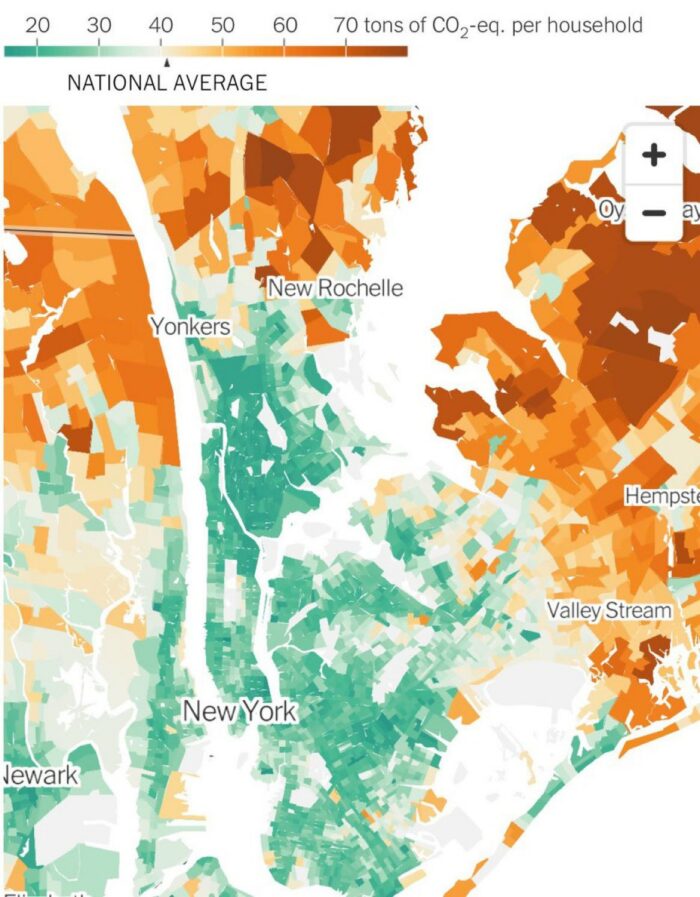It’s been reported Dublin City Council (DCC) is planning on blocking the demolition of buildings on embodied carbon grounds.
Here is the generic case for blocking demolition on embodied carbon grounds:
People are coming to realise how embedded carbon emissions are in our everyday lives. Belatedly, a big effort is being made to fix the problem. The built environment is a huge source of carbon emissions — 36 per cent of total emissions in Ireland.
Emissions from the built environment don’t all come from ongoing sources like heating. Over a building’s lifespan, about a third of emissions come from the construction phase. Emissions from the construction phase must be properly accounted for.
The practice of carelessly knocking down old buildings and replacing them with new ones is a needless waste of carbon emissions, given how much carbon is emitted in the construction phase. The presumption should be against knocking down old buildings. The presumption should be that existing buildings be renovated and retrofitted, where possible, to reduce carbon emissions.
Problems
DCC is coming from a good place. It’s trying to account more fully for Dublin’s carbon emissions. But blocking demolition on embodied carbon grounds would be a huge mistake. The problem is that DCC’s analysis is itself incomplete, and would very likely result in more rather than less carbon emissions.
The idea of embodied carbon is that you save more carbon by retrofitting a home than by knocking and rebuilding one. For example, a study by University College London’s School of Engineering found, over 50 years, that retrofitting saved 10.4 tonnes of carbon per home, relative to rebuilding.
But think about how this would work in practice. Typically you have a big old building that’s not fit to live in any more. It needs to be either knocked or renovated.
Where does one find big old buildings? They’re usually in the middle of the city. They’re in a location where, 50 years ago, land value was high enough to build a big building. In the 50 years it took for the buildings to depreciate, land values have risen further and cities have grown. And the buildings are big because DCC’s policy is specifically targeting big buildings.
So in practice, DCC wants to stop the demolition of big old buildings in the middle of the city. It wants to retrofit them instead.
A problem with this plan is that it puts a ceiling on how much the old site can be developed. A site that justified a big building in 1960 would likely justify a very big building in 2023. A site that might have justified 30 units per hectare might now justify 100.
Preventing the intense development of well-located urban sites is bad from a housing affordability perspective. But, crucially, it’s bad from a climate perspective. People who live near the centre of cities emit much less carbon than people who live in the suburbs or in the countryside. In New York, residents of the inner boroughs emit about a third of the carbon of the US average. And less again than the residents of suburbs. Demolition bans on prime urban sites condemn people to live farther from their work, with longer commutes and much more emissions per head.

How does all this shake out from a carbon point of view? As we’ve seen, a team at University College London’s School of Engineering found, over 50 years, that retrofits saved an average of 10.4 tonnes of carbon per home, relative to rebuilds. That’s a six per cent saving over 50 years.
But what if we assume that the building is well located, near transport hubs? What if we assume that living in that location means the household can get by with one car instead of two? The following chart shows the additional carbon emissions of adding an extra car swamp the six per cent saving in emissions from retrofitting rather than rebuilding.
For so many of the things we care about — lower carbon emissions, lower housing costs, shorter commutes, more walkability — the centre of our cities has to get denser. If we're serious about changing our society for the better we need to change the built environment too. And that requires demolition.
P.s. Another point to keep in mind, which sometimes gets lost: the carbon that's "embodied" in old buildings isn't literally embodied. It's in the atmosphere. It was emitted decades ago when the buildings were being built. It's a sunk cost.
So the question is "Should we emit carbon today in order to save carbon emissions in future?"
P.p.s. This policy change is a window into our mushy planning rules. DCC says its officials will, in future, show a "clear preference" for retrofitting of "larger structures". This preference will be weighed up alongside DCC's many other priorities in deciding whether to grant planning permission. Good luck to developers in trying to work out whether they should buy sites with derelict structures on them.


